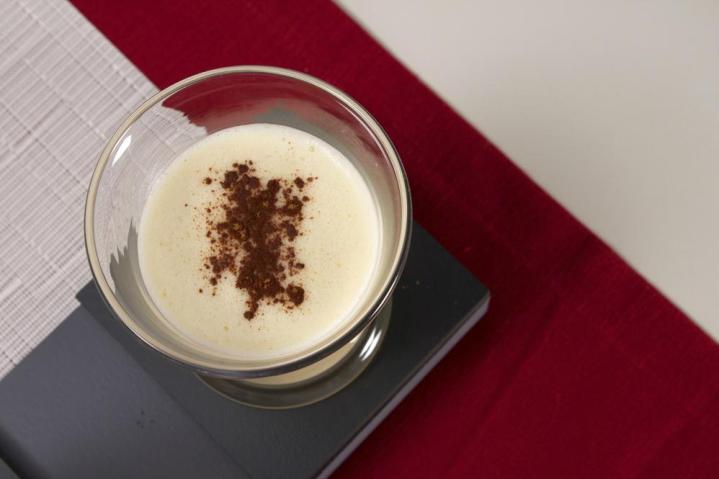
Nothing divides a holiday party quite like the serving of eggnog. Some love it, others hate it. Let’s say you make a batch for Christmas, but you inadvertently find yourself in a group of nog loathers. How long can you keep the dairy-laden brew around? It depends on how much booze you added, essentially.
In 2009, we heard a story on Science Friday about Rockefeller University microbiologists Vince Fischetti and Raymond Schuch testing the salmonella levels in eggnog from Dr. Rebecca Lancefield’s recipe, which had been chilling in the fridge since before Thanksgiving. They’d added a bunch of salmonella and tested it at one, two, and three weeks. The longer the eggnog sat, the fewer bacteria there were, until it was completely sterile by week three.
But the aging process does more than kill bacteria: It makes the nog less boozy-tasting. The year after we heard the SciFri episode, we made our own — though we didn’t have the lab equipment to test the bacteria count. We admit we may have tasted a glass or two before the three weeks were up (living dangerously), and we found it to be quite the potent potable. Some of the liquor taste seemed to evaporate by the time Christmas rolled around, but we never made it again. We prefer Mary Meade’s eggnog recipe, which one of our dads has been making since before we were born.
Booze it up
But is Mary’s mellower concoction high-octane enough to kill bacteria that may have been lurking in the eggs? First, our dad only lets his eggnog sit a day or two before serving — which wouldn’t be enough time to do any real damage to the salmonella, the Rockefeller experiment found. No matter what, we’re playing with delicious, delicious fire. But if you want to age your nog and don’t want to use Lancefield’s recipe, Cook’s Illustrated figured out a formula you can adapt to your family’s favorite: Use 1.5 ounces of 80-proof liquor for each egg, and don’t add your dairy until you’re ready to serve. The alcohol by volume is amped up initially to ensure sterilization and then sinks down to around 14 percent once you add the cream.
Meade’s recipe uses one cup of rum, one cup of Grand Marnier, and a half-cup of brandy. That’s 20 ounces of alcohol to six eggs. That means even if your brandy isn’t 80 proof, the recipe more than meets Cook’s Illustrated’s requirements (as long as your Grand Marnier and rum are 80 proof, of course).
The FDA cautions that relying on alcohol is risky and wants you to use pasteurized eggs or cook them beforehand. Safety first of course (salmonella isn’t something you want to mess with), but we will leave you with a link to Michael Ruhlman, who lived to tell the tale after drinking two-year-old eggnog.


